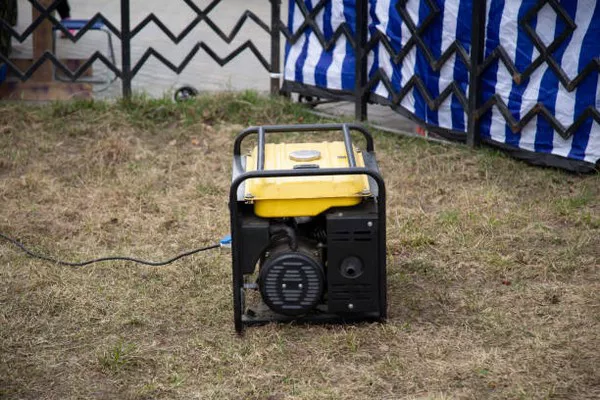Generators are invaluable tools for providing electricity in various situations, whether for camping, home backup, or job sites. Among the many options available, a 2500-watt generator is a popular choice due to its versatility and portability. This article will explore what a 2500-watt generator can run, helping you understand its capabilities, limitations, and how to make the most of your generator.
A 2500-watt generator can be a reliable power source for various appliances and tools, making it ideal for recreational use, emergency backup, and light-duty construction tasks. Understanding the power needs of your devices and how to efficiently use your generator is crucial for getting the most out of this equipment. This guide will detail the types of appliances and tools a 2500-watt generator can run, including their power requirements, and tips for optimizing generator use.
Understanding Wattage
1. What is Wattage?
Wattage is a measure of electrical power. It indicates the amount of electricity an appliance consumes while in use. Understanding wattage is essential for determining what your generator can power.
Running Wattage: The continuous power an appliance requires to operate.
Starting Wattage: Some devices require extra power to start, known as surge wattage. This is especially true for appliances with motors, such as refrigerators and air conditioners.
2. Calculating Total Wattage
To ensure you don’t overload your generator, you must calculate the total wattage of the devices you intend to run. The formula is:
Total Wattage = Running Wattage + Starting Wattage
Make sure to stay within the 2500-watt limit to prevent damage to the generator or the devices.
Appliances and Tools a 2500-Watt Generator Can Power
1. Home Appliances
A 2500-watt generator can efficiently power a variety of home appliances, especially in emergencies or during outdoor activities.
Refrigerator
Running Wattage: 100 to 800 watts
Starting Wattage: 1200 to 2000 watts
Most standard refrigerators can run on a 2500-watt generator, but be mindful of the starting wattage, which can be significantly higher.
Microwave Oven
Running Wattage: 600 to 1200 watts
Starting Wattage: Not applicable
A typical microwave falls within the generator’s capacity, making it useful for cooking meals during a power outage.
Coffee Maker
Running Wattage: 600 to 1200 watts
Starting Wattage: Not applicable
A coffee maker can easily be powered by a 2500-watt generator, perfect for starting your day off right.
2. Heating and Cooling
While larger heating and cooling units may exceed a 2500-watt generator’s capacity, smaller options can work.
Portable Heater
Running Wattage: 1500 watts
Starting Wattage: Not applicable
A small portable heater can be run, but it will limit your ability to power additional devices simultaneously.
Fans
Running Wattage: 50 to 100 watts
Starting Wattage: Not applicable
Fans are energy-efficient and can be easily powered alongside other small devices.
3. Power Tools
For construction and DIY projects, a 2500-watt generator can handle various power tools.
Circular Saw
Running Wattage: 1200 to 1800 watts
Starting Wattage: Not applicable
Most circular saws can be powered, though it’s wise to keep other devices unplugged to prevent overloading.
Drill
Running Wattage: 400 to 800 watts
Starting Wattage: Not applicable
Cordless drills and small electric drills can typically run without issues.
Air Compressor
Running Wattage: 1000 to 1500 watts
Starting Wattage: 2000 to 3000 watts
Most small air compressors can run, but be cautious of the initial surge required to start them.
4. Outdoor Equipment
If you’re camping or tailgating, a 2500-watt generator can power various outdoor equipment.
Electric Grill
Running Wattage: 1000 to 1500 watts
Starting Wattage: Not applicable
Electric grills are a great option for cooking outdoors.
Portable Lights
Running Wattage: 50 to 300 watts
Starting Wattage: Not applicable
LED and fluorescent lights are energy-efficient options that can be used with your generator.
Tips for Maximizing Your Generator’s Efficiency
1. Prioritize Your Devices
Identify the most essential devices you need to power, and prioritize them. This will help you make the best use of your generator’s capacity.
2. Use Energy-Efficient Appliances
Whenever possible, use energy-efficient appliances, which consume less wattage. LED lights and Energy Star-rated devices are excellent choices.
3. Avoid Overloading
Always keep an eye on the total wattage of the devices you are running. Avoid plugging in too many appliances simultaneously to prevent overloading.
4. Regular Maintenance
To ensure your generator runs smoothly, perform regular maintenance. This includes checking oil levels, cleaning air filters, and inspecting fuel lines.
5. Use Extension Cords Wisely
When connecting multiple devices, use heavy-duty extension cords rated for outdoor use. This ensures safety and efficiency in power distribution.
Conclusion
A 2500-watt generator is a versatile and portable power solution that can support a range of appliances, tools, and outdoor equipment. By understanding the power requirements of your devices and following best practices for usage, you can maximize the effectiveness of your generator.
Whether for home backup, outdoor adventures, or light construction tasks, a 2500-watt generator can meet your needs effectively. With proper planning and usage, you can ensure reliable power whenever and wherever you need it.
Related topics:

